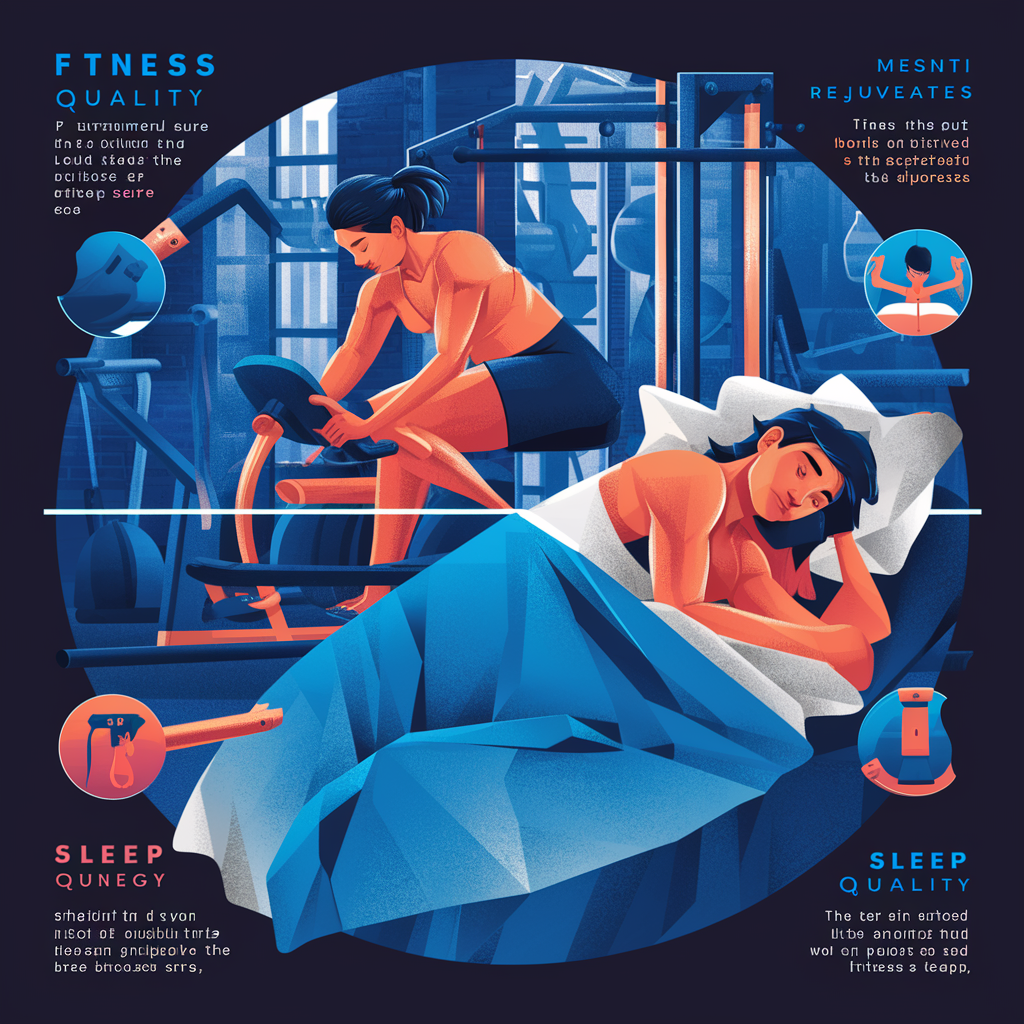Elevate Your Game with These Unexpected Training Techniques
In the world of sports, there’s a never-ending quest for improvement. Athletes are always searching for that edge—something to elevate their game and push the boundaries of their performance. While traditional training methods like running drills and lifting weights have long been the backbone of athletic training, a new wave of unexpected techniques is gaining traction. These methods, often overlooked, can provide the spark needed to take your performance to the next level. So, if you’re tired of the same old routine and ready for a change, buckle up! We’re diving into some innovative training techniques that might just surprise you.
The Power of Visualization
Let’s kick things off with a technique that might seem a bit out there at first: visualization. Athletes across various sports have been harnessing the power of mental imagery for decades. Imagine standing on the starting line of a race, your heart racing, the crowd buzzing. Now, what if I told you that picturing yourself winning that race could actually help you achieve it? It sounds almost too good to be true, but science backs it up.
Studies suggest that mental imagery can enhance performance by activating the same brain areas used during actual physical execution. This means that when you visualize yourself executing a perfect jump shot or sprinting down the track, your body is preparing itself for the real thing. It struck me that this technique is like a superpower. You don’t even have to break a sweat, yet you’re training your brain to perform better!
To get started, find a quiet space where you can focus. Close your eyes and imagine every detail of your sport—feel the sensation of your muscles, hear the sounds around you, and visualize every movement. Make it as vivid as possible. Just remember, like any skill, visualization takes practice. The more you do it, the more effective it becomes.
Incorporating Dance into Your Routine
Now, let’s switch gears and talk about something that might be a little more fun—dance. Yes, you read that right! Whether you’re a seasoned ballerina or someone who can barely keep a beat (I fall into the latter category), incorporating dance into your training can significantly enhance your athletic performance.
Dance fosters coordination, flexibility, and rhythm, all vital components of athleticism. Think about it: have you ever watched a dancer? The way they move, their body control—it’s impressive! One study even found that athletes who participated in dance training improved their speed and agility on the field.
So, how can you incorporate this? Try adding a dance class to your weekly routine. Whether it’s hip-hop, ballet, or salsa, you’ll be working on your footwork and improving your body awareness while having a blast. Who knows, you might even discover a hidden talent for the tango!
Utilizing Breath Control Techniques
Breath control might sound like something you’d learn in a yoga class, but it can be incredibly beneficial for athletes as well. The connection between breath and performance is profound, and mastering it can lead to improved stamina and focus. (Trust me, I learned this the hard way during my first 10k—my breathing was all over the place!)
One effective technique is diaphragmatic breathing, which involves breathing deeply into your belly rather than shallowly into your chest. This method allows for more oxygen intake, which can enhance endurance and reduce fatigue. A few athletes have shared how mastering their breath transformed their performance—I’m talking about reducing their mile time by seconds!
To practice, find a comfortable position—sitting or lying down—and place one hand on your chest and the other on your belly. Inhale deeply through your nose, allowing your belly to rise while keeping your chest relatively still. Exhale slowly through your mouth. Incorporate this technique into your training sessions, especially before a big event. You’ll find that not only does your performance improve, but you also feel more relaxed and centered.
Unconventional Strength Training
When we think of strength training, we often envision heavy weights and the clanking of metal in a gym. But what if I told you that some athletes are ditching the weights for unconventional methods? That’s right—some are turning to tools like sandbags, kettlebells, and even resistance bands! These tools may seem simple, but they can provide a unique challenge that traditional weights can’t.
Take, for instance, sandbag training. It’s not just about lifting; it’s about stability, grip strength, and core activation. When you pick up a sandbag, the shifting weight forces your body to adapt in real-time, mimicking the unpredictability of a game. I remember a time when I saw a football team incorporating sandbags into their workouts, and the results were astounding. They became quicker, stronger, and more agile on the field.
So, if you’re looking to change things up, consider adding some unconventional strength training into your regimen. Not only will it keep your workouts fresh, but your body will likely respond in ways you hadn’t expected!
Exploring Active Recovery
In the pursuit of performance, it’s easy to overlook the importance of recovery. We’ve all been there—pushing ourselves to the limit, thinking that more is always better. But what if I told you that sometimes less is more? Enter active recovery, a concept that might change how you view rest days.
Active recovery involves engaging in low-intensity exercise after a tough workout to promote blood flow, reduce muscle soreness, and speed up recovery. This can include activities like walking, light cycling, or even yoga. Personally, I used to dread rest days (how could I sit still when there were gains to be made?), but I discovered that incorporating active recovery made a world of difference. It felt like I was still moving forward, just at a more relaxed pace.
Moreover, some studies indicate that active recovery can improve overall performance in subsequent workouts. So, rather than couch surfing with a bag of chips, consider going for a gentle swim or a leisurely bike ride. Your body will thank you later!
Gamification of Training
Who says training has to be dull? Enter gamification—a technique that turns workouts into games. And let me tell you, it’s taking the sports world by storm. This innovative approach involves applying game-like elements to training, making it more engaging and enjoyable. It’s like turning your workout into a fun competition!
Some athletes are using apps that track their performance and turn workouts into challenges. Imagine racing against your own best time or competing with friends to complete a set number of reps. I remember a time when my friends and I used an app to challenge each other to see who could run the fastest mile. Not only did it push us to perform better, but we had a blast doing it!
So, if you find yourself bored with your training routine, consider incorporating a bit of gamification. Set challenges for yourself, join a fitness app, or even create friendly competitions with your teammates. Who says working out can’t be fun?
Mindful Movement Practices
Mindfulness has become a buzzword in various fields, and athletics is no exception. Mindful movement practices like tai chi and qigong focus on slow, deliberate movements while promoting mental clarity and relaxation. You might not think these practices have a place in sports, but they can offer significant benefits.
For starters, they help improve balance, coordination, and flexibility—crucial elements for athletes in any sport. Additionally, the meditative aspect of these practices can enhance focus and reduce anxiety. (Trust me, I’ve seen players crumble under pressure, and a little mindfulness could have gone a long way!)
If you’re curious, try adding a few minutes of mindful movement to your training routine. You don’t have to commit to a full class; even a few stretches with focused breathing can make a difference. You might find a newfound sense of calm and clarity that translates into your performance.
Nutrition Beyond the Basics
When it comes to sports performance, most athletes are aware of the importance of nutrition. However, many are still caught in the trap of traditional diets, focusing solely on macronutrients. But what if there was more to it? Enter the world of superfoods, adaptogens, and nutrient timing!
Superfoods like quinoa, chia seeds, and spirulina are packed with nutrients that can enhance performance and recovery. Adaptogens—plants that help the body adapt to stress—can also play a crucial role in an athlete’s diet. (I remember the first time I tried ashwagandha; I felt like I could take on the world!)
Moreover, timing your nutrient intake around workouts can make a significant difference. Consuming carbohydrates and protein within a specific timeframe post-workout can optimize recovery and muscle growth. So, if you’re serious about your training, delve deeper into your nutrition. Research, experiment, and see what works best for your body. Your performance might just thank you!
The Role of Technology in Training
In today’s digital age, technology is transforming how athletes train. From wearable devices to virtual reality, the options are seemingly endless. These tools can provide real-time feedback, track performance, and even simulate game scenarios. (I can’t help but feel a bit envious of younger athletes who have access to such advanced tools!)
Wearable devices like heart rate monitors and fitness trackers can help you optimize your workouts by providing insights into your performance. Meanwhile, virtual reality training can allow athletes to practice in lifelike environments without the physical wear and tear. Imagine honing your skills in a virtual stadium before stepping onto the real field—now that’s next-level training!
So, if you’re not already utilizing technology in your training, it might be time to consider it. Invest in a fitness tracker or explore virtual training options. You might discover new insights that lead to significant improvements in your game.
Wrapping It Up: Embracing the Unexpected
As we’ve explored, the world of athletic training is evolving, and embracing unexpected techniques could be the key to elevating your game. From visualization to gamification, these methods offer fresh perspectives that can enhance performance in ways you might not have imagined. It’s all about stepping out of your comfort zone and trying something new.
So, whether you’re an aspiring athlete or a seasoned pro, consider incorporating some of these unexpected training techniques into your routine. You might just find the spark you’ve been searching for. Remember, the journey to greatness is not just about hard work; it’s also about smart training and a willingness to explore the unconventional. Who knows? The next big breakthrough in your performance could be just a creative training technique away!
Now, go out there and elevate your game! And maybe—just maybe—give that dance class a shot; you might find yourself twirling toward victory!




